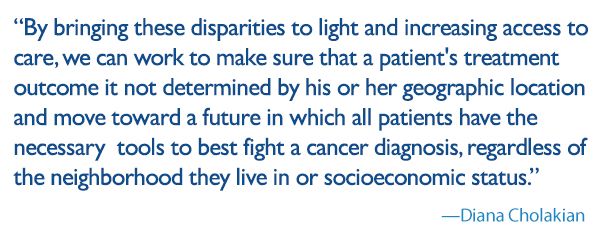Spurred by the most recent women’s march in Washington, D.C., it is easy to think that the best way to get involved and rally for women’s rights is by donning a pink cap and waving signs. While that is one way to fight for women’s rights, another is to highlight health care disparities specifically affecting women and find ways to change them. This was the topic of a recent symposium at Johns Hopkins on Friday, March 10, during which Robert Bristow, the former division director of gynecologic oncology at The Johns Hopkins Hospital and current chair of the University of California, Irvine’s Department of Obstetrics and Gynecology, was celebrated and honored.
The symposium celebrated a fellowship fund created by Bristow and Diane O’Day, the former fellowship coordinator of the program and current budget analyst of the department, and also highlighted the great gynecologic oncology fellowship program at Johns Hopkins. Bristow, a former graduate of the gynecology and obstetrics residency at Johns Hopkins, took attendees on a journey through his early career, speaking about his fellowship at Cedars-Sinai/UCLA and his subsequent return to The Johns Hopkins Hospital, where he went on to work with the late Frederick Montz. It was during his time working with Montz that he focused his research on ovarian cancer. While Bristow has authored countless textbooks and written over 200 peer-reviewed publications, the research he chose to highlight at this symposium specifically focused on disparities in ovarian cancer care.
Unequal Treatment of a Cancer Diagnosis
The conclusions he presented were eye opening. Through his research, Bristow found that in the U.S., not all women are treated equally in terms of care following an ovarian cancer diagnosis. Using the guidelines in cancer care established by the National Comprehensive Cancer Network, he found that when comparing long-term outcomes across different races for patients diagnosed with the same stage and type of ovarian cancer, black women were more likely to die of ovarian cancer than their white counterparts. The factors related to this included lower socioeconomic status, being less likely to seek care at high-volume centers, less access to surgery or care with high-volume providers, and differences in type of insurance (i.e., private insurance versus Medicare). He was able to extrapolate this data in another study on geospatial mapping and determined that to some extent, these differences in access to care and patient outcomes were related to where the women lived.
Expanding Access to Quality Care
One way of bridging the divide created by geography between patients and hospitals that care for them is ensuring that the barriers are eliminated so that patients have access to the centers that can best care for them. Many hospitals have tried to emulate this model, and if you drive around Baltimore, you may notice that Johns Hopkins has as well, via the Hopkins Access Line, a program that helps streamline the process of referring patients from other health care providers to The Johns Hopkins Hospital for care. Bristow brought to light a problem that tends to be easier to recognize than it is to remedy.
Realizing that major metropolitan centers tend to harbor the cancer centers that ultimately provide the best care for cancer patients is the first step, but his presentation also emphasized how important it is for providers to strive to bring gold-standard cancer care to all populations and work to increase access to better care. By bringing these disparities to light and increasing access to care, we can work to make sure that a patient’s treatment outcome is not determined by his or her geographic location and move toward a future in which all patients have the necessary tools to best fight a cancer diagnosis, regardless of the neighborhood they live in or socioeconomic status.
Realizing that major metropolitan centers tend to harbor the cancer centers that ultimately provide the best care for cancer patients is the first step, but his presentation also emphasized how important it is for providers to strive to bring gold-standard cancer care to all populations and work to increase access to better care. By bringing these disparities to light and increasing access to care, we can work to make sure that a patient’s treatment outcome is not determined by his or her geographic location and move toward a future in which all patients have the necessary tools to best fight a cancer diagnosis, regardless of the neighborhood they live in or socioeconomic status.
Want to read more from the Johns Hopkins School of Medicine? Subscribe to the Biomedical Odyssey blog and receive new posts directly in your inbox.
Related Content
- Learn more about the Hopkins Access Line (HAL) for Providers
- Hidden Figures: On Discrimination and Women’s Rights
